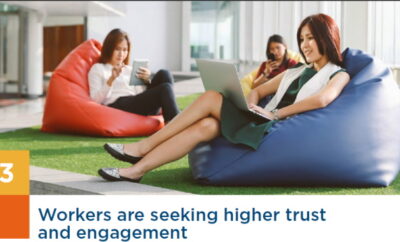
The Gen XY Lifestyle
4 ways to beat work burnout in 2020
Millions of people were forced to work from home under emergency regulations and lockdowns due to the ongoing global COVID-19 pandemic. Singapore was no exception.
Working from home may have initially sounded great, with flexible work hours, no commutes, and wearing just about anything comfortable at home.
The reality is that there are many challenges that surfaced because of this unprecedented crisis, such as the loss of autonomy, forced social isolation, and the uncertainty of how long this lockdown will persist and what outcomes may be. Millions of jobs were lost worldwide, and thousands of businesses faced closures and bankruptcies.
All these factors put a huge mental strain on many people who may never have had to experience such magnified mental duress over such a long period of time.
What is burnout and why it differs from stress?
Burnout refers to a state of physical, emotional, and mental exhaustion caused by prolonged involvement in emotionally demanding situations, especially in the context of work.
According to the World Health Organization’s International Disease Classification (ICD-11), burnout is now categorised as a syndrome that results from chronic workplace stress that has not been successfully managed. It is made worse now that the workplace is also the place we call home. While burnout can certainly be the result of excessive and prolonged stress, it is not the equivalent of too much stress. You can respond in different ways to stress – having increased anxiety, being frustrated or angry, or perhaps even using stress as a positive motivator.
Burnout, however, is a distinct entity which is characterised by emotional exhaustion, depersonalisation (feelings of cynicism and detachment), and a low sense of personal achievement or accomplishment.
Burnout occurs gradually and insidiously and so it is important for you to recognize the early signs and symptoms that may signal a need to address things before they get worse.
Symptoms of burnout
- Cognitive – poor concentration, suspicion, mistrust, stereotyping, dehumanizing, distancing, rumination, cynicism
- Emotional – loss of humour, irritability, resentment, loss of motivation, decreased sense of accomplishment, depressed mood, apathy, feelings of guilt, blame, hopelessness and negativity
- Physical – tiredness, lethargy, sleep disorders, changes in appetite, frequent headaches and muscle pains, increased minor illnesses
- Behavioral – work and responsibility avoidance, isolation, inflexibility, inefficiency and procrastination, acting out (through alcohol, drugs, gambling, affairs, etc.)
The “work from home” (wfh) practice in the midst of this pandemic has intensified a host of risk factors that contribute to burnout. These include a blurring of boundaries between personal and work life, a lack of control over the current situation, and a forced reduction in social interaction. Finding ways to manage these risk factors, paying attention to the signs and symptoms, and actively reducing stress can prevent you from burning out.
Ways to cope with WFH burnout
Reach out
It is even more important now to actively reach out to connect with people. When you are burnt out, problems may seem unrelenting and insurmountable, and these feelings are greatly heightened by isolation and loneliness. While face-to-face meetings are impossible currently, keep connected to friends and family through online video chats, games, or virtual group exercises. If needed, reach out to a mental health counsellor or therapist online. Simply talking to someone about your problems can help put things in perspective, calm your nerves, and relieve stress.
Prioritise
Focus on the work that is most critical, rather than work that will just keep you busy at home. Many employees may feel the need to appear productive and perform immediate tasks rather than those which are actually important.
Apart from work tasks, prioritise “self-care”. This means ensuring you get adequate sleep, proper nutrition, and scheduled time for physical exercise, hobbies, or activities that are simply fun.
Maintain boundaries
Many are now facing challenges of integrating child or elder care responsibilities at home with an ever-increasing workload. Setting physical, social, and temporal boundaries is critical for our well-being and an increased work engagement. This may mean planning a schedule for work duties and personal life, creating a dedicated work space at home, and having some form of simple ‘transition ritual’ – this may include making a cup of coffee, a short meditation, or even showering and changing out of pajamas and applying some make-up or hair product – to signal to yourself and others in the household that you are in “work” mode.
Reframe
While burnouts can affect anybody, recognize that certain personality types can be more prone than others. High achieving, Type A personalities, having perfectionist tendencies, and a need to be in control and a reluctance to delegate tasks to others, can increase the risk of burnout.
Reframing your perspective on work can be greatly beneficial to your mental well-being.
How do you reframe? Find what makes your job meaningful, focus on aspects you enjoy or that you can express gratitude for, and focus on things within your control, while also accepting some other things which are outside your sphere of control and involvement.
Burnouts can be detrimental to anyone, no matter how astute we are in making decisions and doing our work.
We need to gauge continuously and ensure we do not fall into our own endless loops of despair because we are burned out. We can take charge, and practice ways and means to defuse a burnout, or allow ourselves to prevent the onset of a burnout.
Article contributed by Dr. Jonathan Ti, DTAP Clinic Robertson.
Dr. Jonathan Ti is a resident doctor at DTAP Clinic Robertson, a general practice clinic with a special interest in Men’s, Women’s, and Sexual Health. He has special interests in Men’s Health and Sexual Health, as well as Endocrine and Metabolic / Weight Loss disease management. He has taken on a role in developing guidelines for the Blueprint to End HIV in Singapore (Community Subsector). He sees many families with young children from diverse international backgrounds, and hopes to support safe, healthy, and educational conversations about sexual development and wellbeing for all of his patients









